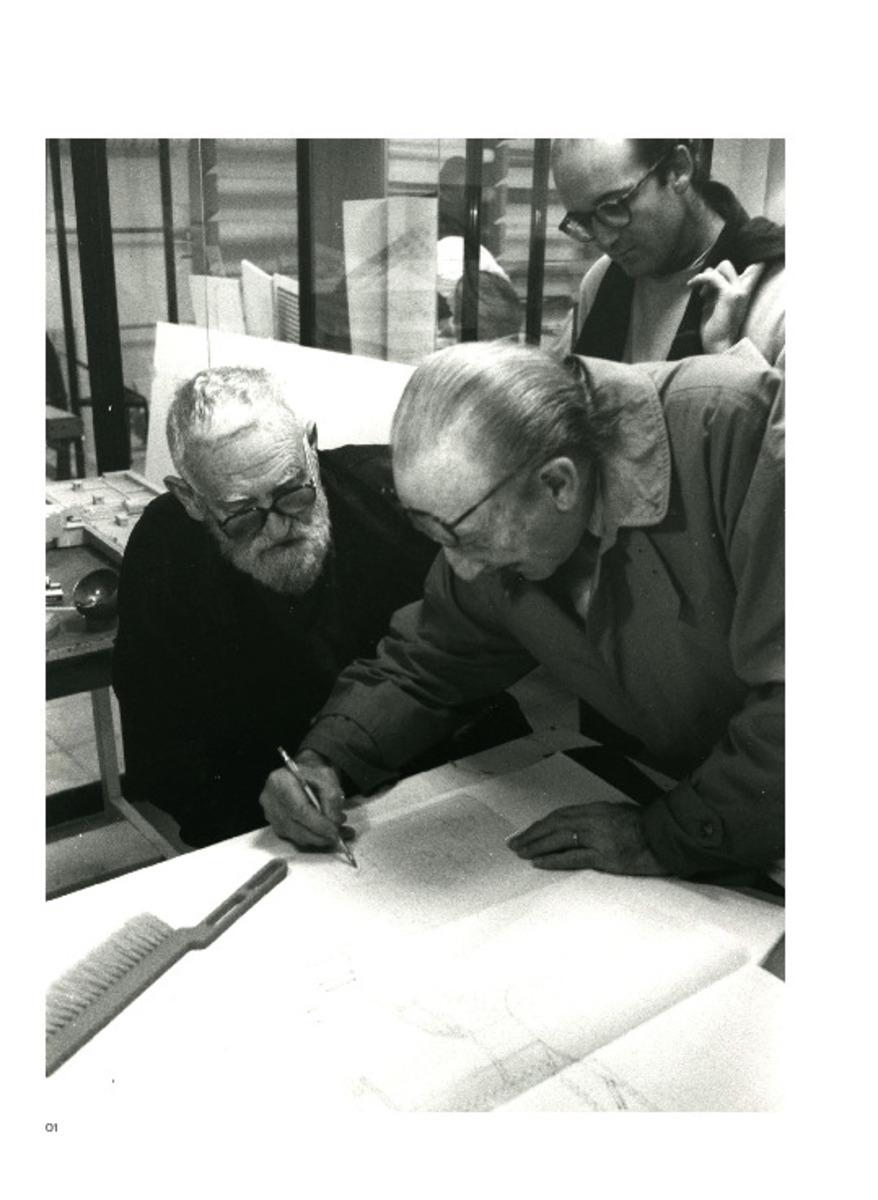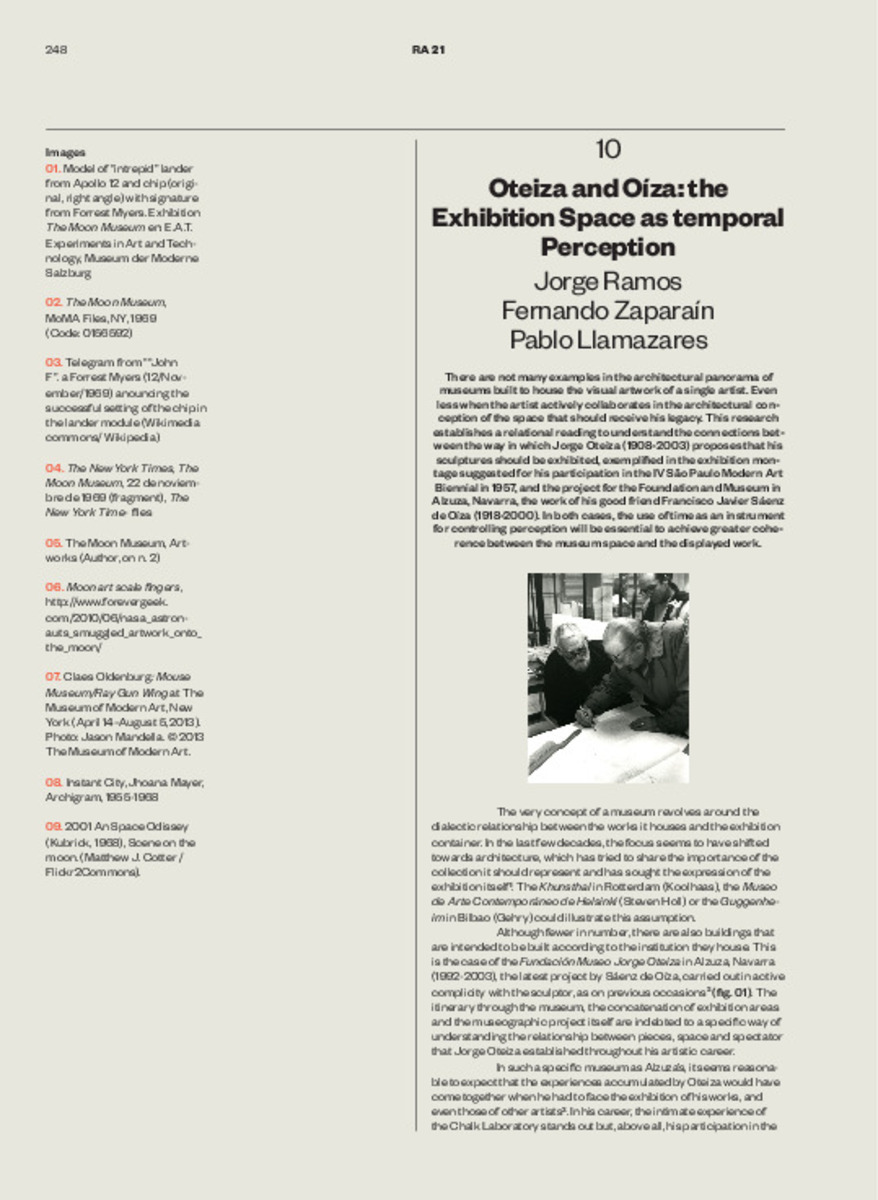Full metadata record
| DC Field | Value | Language |
|---|---|---|
| dc.creator | Ramos, J. (Jorge) | - |
| dc.creator | Zaparaín, F. (Fernando) | - |
| dc.creator | Llamazares, P. (Pablo) | - |
| dc.date.accessioned | 2019-10-08 | - |
| dc.date.accessioned | 2021-06-23T08:37:27Z | - |
| dc.date.available | 2021-06-23T08:37:27Z | - |
| dc.date.issued | 2019 | - |
| dc.identifier.citation | Ramos, J. (Jorge); Zaparaín, F. (Fernando); Llamazares, P. (Pablo). "Oteiza y Oíza: el espacio expositivo como percepción temporal". Ra. Revista de Arquitectura. 21, 2019, 120 - 137 | es |
| dc.identifier.issn | 1138-5596 | - |
| dc.identifier.uri | https://hdl.handle.net/10171/60777 | - |
| dc.description.abstract | There are not many examples in the architectural panorama of museums built to house the visual artwork of a single artist. Even less when the artist actively collaborates in the architectural conception of the space that should receive his legacy. This research establishes a relational reading to understand the connections between the way in which Jorge Oteiza (1908-2003) proposes that his sculptures should be exhibited, exemplified in the exhibition montage suggested for his participation in the IV São Paulo Modern Art Biennial in 1957, and the project for the Foundation and Museum in Alzuza, Navarra, the work of his good friend Francisco Javier Sáenz de Oíza (1918-2000). In both cases, the use of time as an instrument for controlling perception will be essential to achieve greater coherence between the museum space and the displayed work. | en_US |
| dc.description.abstract | No existen muchos ejemplos en el panorama arquitectónico de museos realizados para albergar la obra plástica de un solo artista. Menos aún cuando el artista colabora de manera activa en la concepción arquitectónica del espacio que debe acoger su legado. Esta investigación establece una lectura relacional para comprender las conexiones entre el modo en el que Jorge Oteiza (1908-2003) propone deben ser expuestas sus esculturas, ejemplificado en el montaje expositivo planteado para su participación en la IV Bienal de Arte Moderna de São Paulo en 1957, y el proyecto para su Fundación y Museo en Alzuza, Navarra, obra de su gran amigo Francisco Javier Sáenz de Oíza (1918-2000). En ambos casos la utilización del tiempo como instrumento de control de la percepción será esencial para conseguir una mayor coherencia entre el espacio museístico y la obra mostrada. | es_ES |
| dc.language.iso | spa | - |
| dc.publisher | Servicio de Publicaciones de la Universidad de Navarra | es_ES |
| dc.rights | info:eu-repo/semantics/openAccess | es_ES |
| dc.subject | Percepción | - |
| dc.subject | Bienal São Paulo | - |
| dc.subject | Museo Oteiza | - |
| dc.subject | Jorge Oteiza | - |
| dc.subject | Sáenz de Oíza | - |
| dc.title | Oteiza y Oíza: el espacio expositivo como percepción temporal | es_ES |
| dc.title.alternative | Oteiza and Oíza: the Exhibition Space as temporal Perception | en_US |
| dc.type | info:eu-repo/semantics/article | es_ES |
| dc.identifier.doi | 10.15581/014.21.120-137 | - |
| dadun.citation.endingPage | 137 | - |
| dadun.citation.publicationName | Ra. Revista de Arquitectura | - |
| dadun.citation.startingPage | 120 | - |
| dadun.citation.volume | 21 | - |
Statistics and impact
Items in Dadun are protected by copyright, with all rights reserved, unless otherwise indicated.







